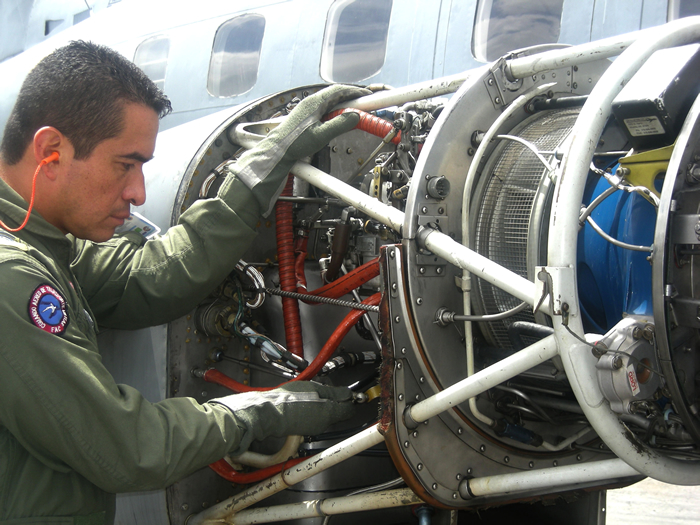Analysis of the damage tolerance under the criterion of the elastic-linear fracture of the wing of a sports category aircraft. (lsa)
DOI:
https://doi.org/10.18667/cienciaypoderaereo.493Keywords:
Aircraft Structure, Aluminum Alloy, Crack Growth, Residual Life., Damage Tolerance Analysis, Finite Element Analysis, Non-Destructive Testing (NDT), Multiphysics SimulationAbstract
The following article presents a methodology for applying a Damage Tolerance Analysis to the wing structure of an LSA category aircraft. This study contemplates a CFD analysis in ANSYS Fluent where aerodynamic loads that work on the wing are calculated, followed by a structural resistance analysis in which an integration Fluid-Structure Interface is made to determine the maximum stresses supported by the structure using Finite Element (FEA) performed in ANSYS Workbench, an analysis of critical crack sizes on the primary elements of the structure and a residual life calculation of this elements in order to create NDT inspections intervals to ensure structural integrity of the aircraft wing.
Downloads
References
A.F. Grandt, Jr. and G.M. Sinclair (1972). "The Stress-Intensity Factors for Surface Cracks in Bending". Stress Analysis and Growth of Cracks Part 1, ASTM STP 513, pp. 37-58.
https://doi.org/10.1520/STP34112S
Albañil H. Héctor, Espejo M. Edgar Mecánica de fractura y análisis de falla. Editorial; Universidad Nacional de Colombia, Facultad de Ingeniería Departamento de Ingeniería Mecánica y Mecatrónica, Sede Bogotá -Colombia (2001)
D.S. Dawicke (1997). "Residual Strength Predictions using a Crack Tip Opening Angle Criterion". Proceedings of the FAA-NASA Symposium on the Continued Airworthiness of Aircraft Structures. DOT/FAA/AR-92/2, pp.555-566.
DTD Handbook, Damage Tolerance Testing, http://www.afgrow.net/ (2014)
P.R. Abelkis (1980). "Effect of Transport Aircraft Wing Loads Spectrum Variation on Crack Growth". Effect of Load Spectrum Variables on Fatigue Crack Initiation and Propagation. D.F. Bryan and J.M. Potter (Eds.). ASTM STP 714, pp. 78-134. Also see AFFDL-TR-78-134 (1978, November).
https://doi.org/10.1520/STP27487S
H. Liebowitz (1974). "Fracture Mechanics of Aircraft Structures". AGARD-AG-176, North Atlantic Treaty Organization, Advisory Group for Aerospace Research and Development.

Downloads
Published
Issue
Section
License
Assignment of Copyrights
Authors assign Ciencia y Poder Aéreo journal the exclusive rights (reproduction, distribution, public communication, and transformation) to exploit and commercialize their work, in whole or in part, in all the formats and modalities of present or future exploitation, in all languages, throughout the life of the work and throughout the world.
All contents published in Ciencia y Poder Aéreo journal are licensed under a Creative Commons Attribution 4.0 International License, whose complete information is available at http://creativecommons.org/licenses/by/4.0/
Under the terms of this license, users are free to download, print, extract, archive, distribute and publicly communicate the content of articles, provided that proper credit is granted to authors and Ciencia y Poder Aéreo, scientific journal of the Graduate School of the Colombian Air Force. Except when otherwise indicated, this site and its contents are licensed under a Creative Commons Attribution 4.0 International License.
For other uses not considered under this license it is required to contact the Director or the Editor of the journal at the e-mail address cienciaypoderaereo1@gmail.com.
The Graduate School of the Colombian Air Force and this publication are not responsible for the concepts expressed in the articles, including the metadata or the affiliation stated by authors. This is the full responsibility of the authors.





















